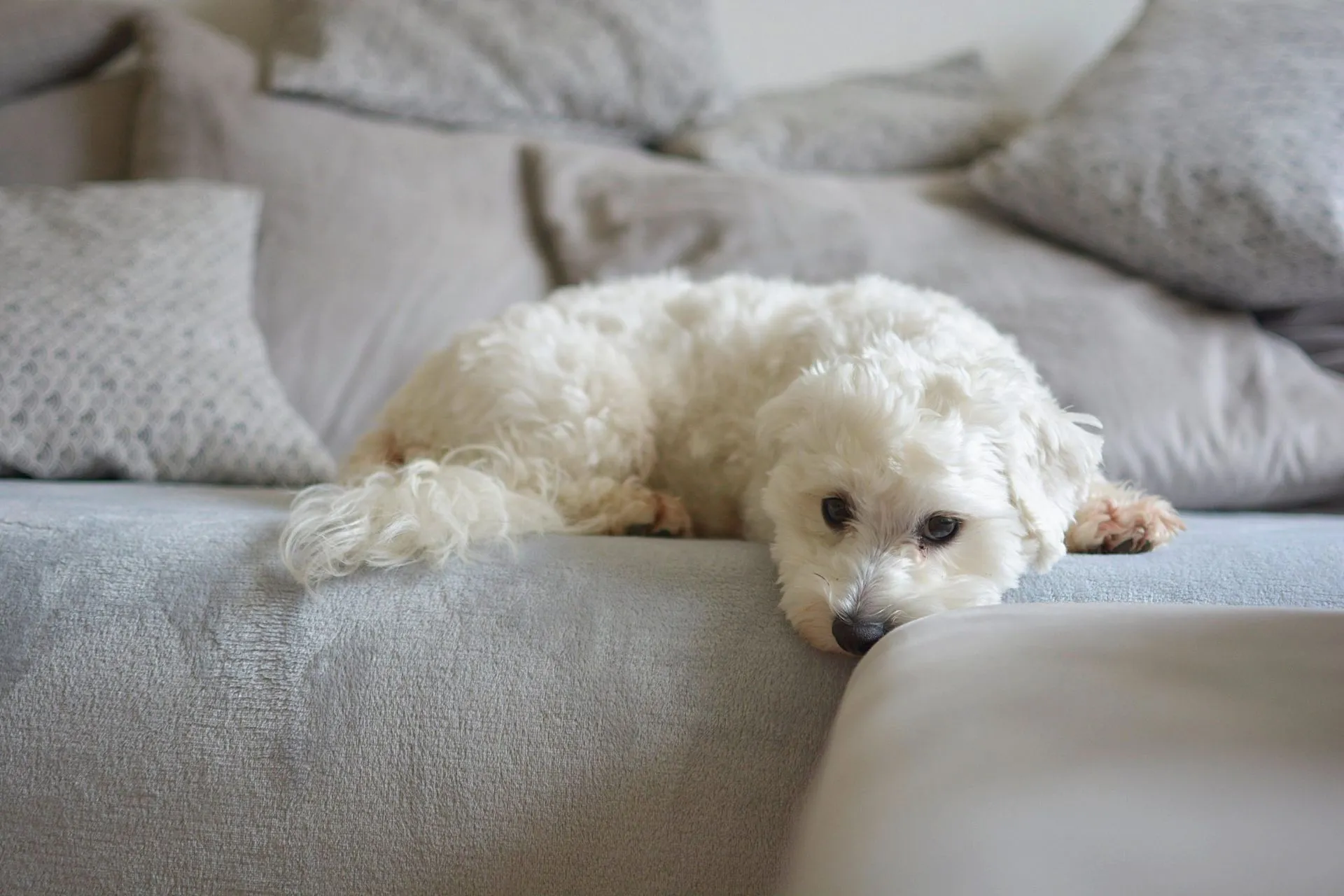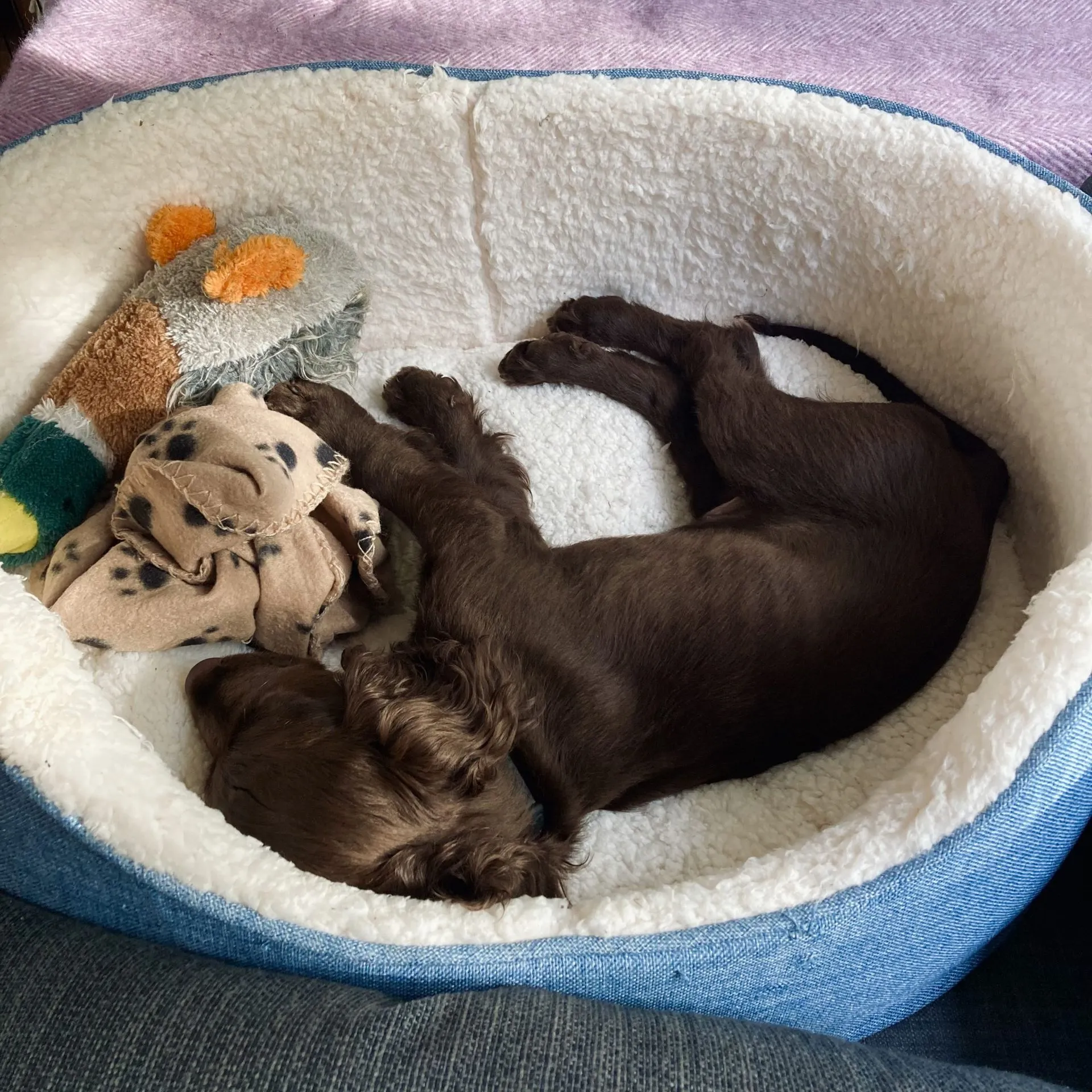Sharing your home with a beloved canine companion brings immense joy, but sometimes, a few ground rules are necessary to maintain harmony. One common challenge dog owners face is managing a dog’s enthusiasm for the sofa, especially when muddy paws or visiting guests are involved. If you’re wondering How To Stop A Dog Jumping On The Couch, even if you’ve previously allowed it, rest assured that with consistent training and positive reinforcement, this behavior can be gently redirected. This guide will walk you through expert strategies to encourage your dog to find comfort in their own designated bed, preserving both your furniture and your peace of mind. We’ll explore effective commands, the importance of consistency, and how to handle excitable pups to ensure a well-behaved companion. Many common behavior issues in dogs can be addressed with the right approach, and keeping your dog off the furniture is no exception.
Five Steps to Keep Your Dog Off the Sofa
Successfully teaching your dog to stay off the couch involves patience, consistency, and a clear understanding of their needs. Here are five practical steps to guide you through the process, ensuring a positive experience for both you and your furry friend.
1. Ensure Your Dog Has a Designated, Comfortable Bed
The first crucial step in redirecting your dog from the sofa is to provide them with an equally (or even more) appealing alternative. Every dog should have a comfortable, warm, and inviting bed in each area of the house where they are allowed to settle. This isn’t just a place to sleep; it’s a calm sanctuary where they can relax and feel secure.
When moving between rooms, especially into a shared living space like the lounge, bring your dog’s bed with you. Encourage your dog to go to their bed using a clear command, such as “bed” or “place.” To prevent your dog from leaving their designated area and attempting to jump onto the sofa for attention, I typically use two primary commands: “leave,” followed by a hand direction, and pointing to their bed while saying “in.” The “leave” command is also highly effective for situations like how to get my dog to stop biting objects they shouldn’t. Reinforce these commands with praise and a small reward when your dog complies, making the bed a consistently positive place to be.
2. Revisit Foundational Training If Commands Are Unsuccessful
If your dog is not responding consistently to commands like “leave” or “in,” it’s a clear indication that they might not fully understand what is being asked of them. In such cases, the solution is not to get frustrated but to gently go back a few steps in their foundational training. This helps reinforce their understanding and builds a stronger association between the command and the desired action.
A routine I often teach clients involves holding their dog’s bed, asking the dog to sit, and then placing the bed in the desired relaxation area. Next, call the dog to their bed (individually if you have multiple dogs), and as soon as they settle, reward them with a piece of kibble or praise for their good behavior. This process creates a strong, positive association with their bed, teaching them that it is a rewarding and happy place to be, regardless of its location. This technique is also incredibly useful when traveling or visiting friends, as you can bring a familiar item, like a small mat or their actual bed, to create a comfortable space for them in any new environment. My brother and sister-in-law, for instance, always bring their dog’s bed when they visit, ensuring their dog remains calm and settled.
 A Labrador relaxing on a sofa, looking attentively at its owner
A Labrador relaxing on a sofa, looking attentively at its owner
3. Consistency is Key: Avoid Allowing Your Dog to Have Their Own Way
One of the most significant pitfalls in dog training is inconsistency. If you occasionally allow your dog on the sofa, even for short periods, it sends mixed signals and makes the training process considerably harder. Dogs thrive on routine and clear boundaries. Allowing them to regularly jump on the sofa will teach them to expect to be there, rather than waiting for an invitation. This can lead to a lack of respect for your personal space and, often, translate into other behavioral challenges.
Inconsistent rules can undermine your authority and make your dog less likely to respond to commands in other areas of their life. For example, if your dog doesn’t respect your space on the couch, they might also exhibit less disciplined behavior during walks or when interacting with other people. Addressing issues like dog dominance behavior with other dogs or specific breeds like Australian Cattle Dog behavior problems often stems from establishing clear, consistent expectations. Therefore, for your dog to truly understand and adhere to the “no sofa” rule, every member of the household must be committed to enforcing it consistently, without exceptions.
4. Practice, Practice, Practice: Reinforcing the New Routine
If you’ve previously permitted your dog on the sofa and are now aiming to change this habit, be prepared for dedicated effort. As with any behavioral modification, regular practice of the new routine is essential to achieve the desired results. Training isn’t a one-time event; it’s an ongoing commitment that reinforces the behavior you want to see.
When your dog is currently on the sofa, calmly point to their bed and use your chosen command, such as “Bertie, in!” If your dog hesitates, gently guide them. It’s vital that your dog associates their bed with a positive outcome, meaning they will be rewarded for following the command. This positive reinforcement, whether a treat, praise, or a favorite toy, solidifies the idea that going to their bed is a good choice. Through consistent repetition, your dog will learn that their bed is not only a comfortable place but also a place where good things happen, making them more willing to comply with the command over time.
 A cocker spaniel puppy asleep in a cozy basket
A cocker spaniel puppy asleep in a cozy basket
5. Address Over-Excitement: Knowing When Your Dog Isn’t Ready for the Environment
Sometimes, a dog’s inability to stay off the sofa isn’t a lack of understanding but rather an overflow of excitement. If your dog is constantly jumping in and out of their bed, running back and forth, or displaying general restlessness, it’s a clear sign that they may not yet be ready for that particular environment, especially when there are other people, food, or distractions present. Pushing them in an over-stimulated state will likely lead to frustration for both of you.
To restart the training process effectively, bring your dog back to basics with their bed. When they are calm and settled in their bed, place a food reward on the floor nearby, clearly visible to them. This provides an immediate, tangible reason for them to remain in their bed. Periodically, walk past their bed and reward them with another piece of kibble. The goal is for your dog to learn to ignore distractions, understanding that staying in their bed consistently leads to positive reinforcement. This gradual approach, reinforced over days or weeks, will teach them to remain calm and settled, knowing that their reward will always come, whether it’s a treat, a gentle ear scratch, or quiet praise. This careful attention to their emotional state is key in addressing all behavior problems, not just sofa jumping.
 A dog looking up attentively while settled on its bed
A dog looking up attentively while settled on its bed
Conclusion
Teaching your dog how to stop a dog jumping on the couch is a rewarding journey that strengthens your bond and establishes clear boundaries within your home. By implementing these five expert steps—providing a comfortable bed, revisiting foundational training, maintaining strict consistency, practicing regularly, and addressing over-excitement—you can successfully redirect your dog’s behavior. Remember, patience, positive reinforcement, and a unified approach from all family members are crucial for success. With time and dedication, your dog will learn to happily settle in their own space, respecting your home and making your shared life even more harmonious.
